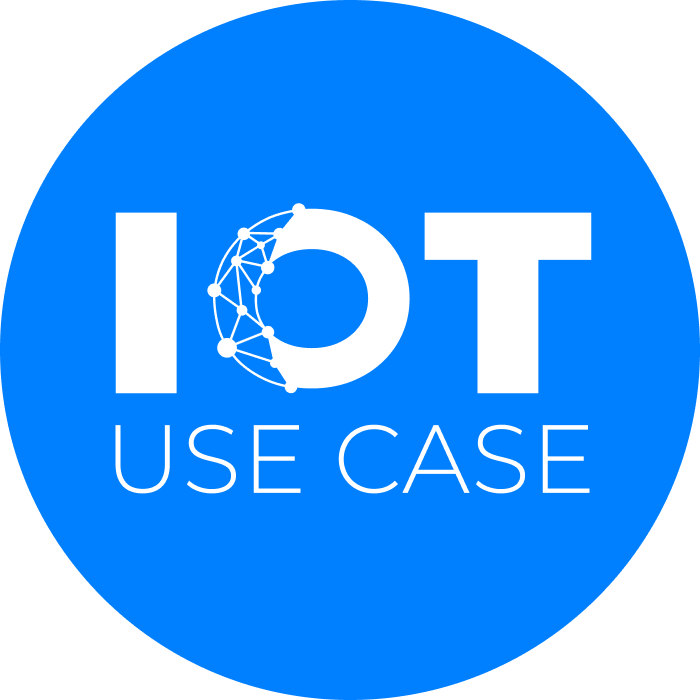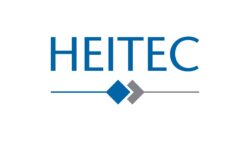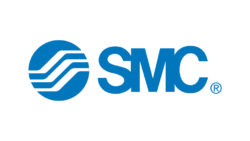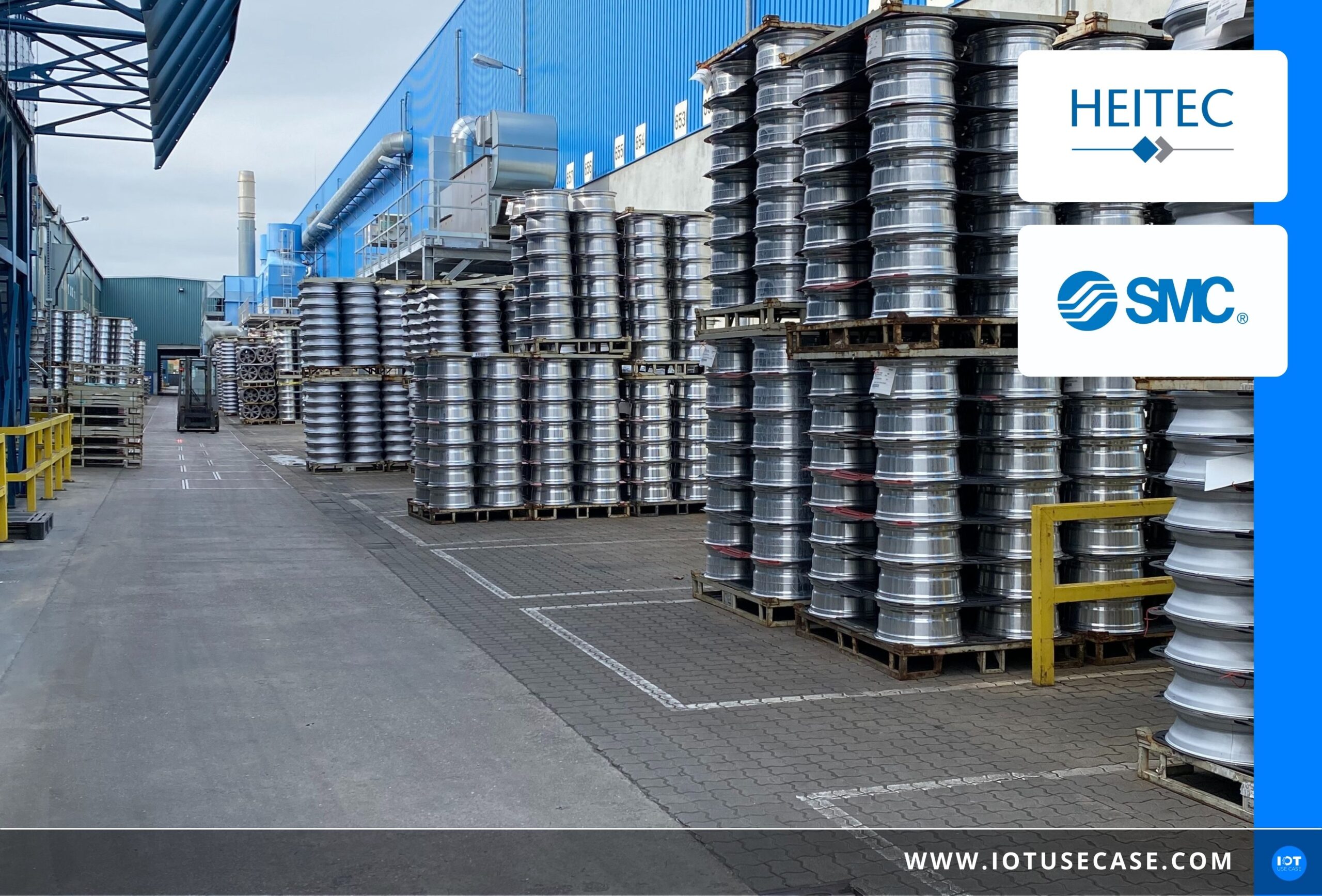Operating hours, parts produced per hour, standby times, CO2 consumption per product, liters of compressed air per minute – these are all data that contain great added value. But: What exactly? And how do you add value? When talking about digitalization, many ask the question, “Where do we actually start?” or “Where is the potential for our business anyway?”
Episode 95 at a glance (and click):
- [11:10] Challenges, potentials and status quo – This is what the use case looks like in practice
- [24:22] Solutions, offerings and services – A look at the technologies used
- [34:19] Results, Business Models and Best Practices – How Success is Measured
Podcast episode summary
Today we have concrete answers from an internationally active machine and plant manufacturer belonging to the HEITEC Group, HEITEC PTS GmbH – represented today by Thomas Baumann (Head of Service). With IoT partner SMC Germany – a leading manufacturer of pneumatic and electric automation technology and a true expert in IoT. In various industries such as the automotive, electrical, medical, packaging and food industries as well as machine tool manufacturing, SMC uses its product range of more than 12,000 basic models with over 700,000 variants for individual customer solutions. SMC understands exactly how its customers use components and equipment today and can use this knowledge to generate real added value for its customers. How exactly? That’s what Oliver Prang (Digital Business Development at SMC) tells us in this podcast episode with user HEITEC PTS.
SMC Germany has installed its monitoring solution in a machine from HEITEC PTS. Specifically, this episode is about monitoring the compressed air consumption of existing machines at a German manufacturer of alloy wheels.
Since 2010, HEITEC PTS, as a regional and owner-managed company, has been the largest machine builder within the internationally operating HEITEC Group. The company’s expertise is in standard automation, software development and industrial X-ray technology, as well as robot handling and plant engineering.
This podcast episode impressively shows how digitalization is changing service departments at machine builders.
Podcast interview
So today, a pragmatic project from practice with a real win-win situation for all involved; you rarely have that! Especially in such a tangible manner. And which one that is, you learn now and with that straight into the studio!
Hello Oliver and Thomas! I am very happy that you are with us today. Oliver, you’ve been with us before, that was episode 28, I’m so glad you’re with us today! How are you and where am I reaching you right now?
Oliver
Hi, thank you Madeleine for doing this with me again! I am pleased to be invited again. I am working from home today; so it’s quieter in the background.
It was so successful, that’s why you’re here again, the episode was really great, feel free to listen again. Exactly.
SMC has been with us in the IoT use case ecosystem since zero hour and it’s really really nice to see all of it evolving. You are very passionate and always motivated. It’s very nice that you’re helping to shape this and drive it forward in your company, also together with us, thank you very much for that.
Oliver
Thank you for the warm words! But it’s also a lot of fun for me, because you can see that a lot of people in the network are enthusiastic about this topic. They are inquisitive, but are also ready to exchange knowledge again and again.
Thomas, it’s great to have you too! How are you and where can I reach you right now?
Thomas
Good morning Madeleine! I’m working from home today, north of Stuttgart. After being out for a few days this week, I took the opportunity to work from home so we have the quiet environment needed for the recording of the podcast.
Where are you usually? If not working from home, then at your site, at HEITEC PTS, right?
Thomas
Exactly, We are in beautiful Kuchen, a small village between Stuttgart and Ulm, directly in the mechanical engineering valley.
I was just there for the fair, I went that way, then I know where you’re based!
Briefly about SMC: You are very well known on the market as a leading manufacturer partner and solution provider for pneumatic and electric automation technology and are also active across industries.
For some years now, you have been leading the way – also through you and your team, of course – in making component knowledge available to your customers. You know the wear limits of your components, and the aim is to use this data to save customers time and money in the end, in terms of compressed air and equipment consumption.
Today we will find out how this works and in which use cases it makes sense. You are Digital Business Development, that’s what it’s called at SMC Germany. What exactly do you do in the department and which customers do you work with today?
Oliver
Digital Business Development, which means we take care of new ideas, including business models, around the topic of digitalization and Industry 4.0. In particular, it is about seeing what our customers do with our products and, above all, with the data that our products, i.e. sensors or actuators, generate somewhere in the field. And how can you use them profitably at the end of the day? Where does the data go? How can I integrate this? And that’s the main subject area I deal with.
It’s a really exciting environment because many in the field are setting out to harness that data and engage closely with their customers on how that’s being used.
With which use cases around your component, with your customers, which use case do you handle here and which project are we looking at in detail today?
Oliver
Our customers can mainly be divided into machine builders and machine users. So those who take the machines and produce something with them. The requirements or questions that come to us are as varied as our customers. Reducing the “downtime” of a machine is always one of the issues, in other words, what goes out the back, predictive maintenance, or predictive maintenance as it is called these days. These are issues that have come up again and again in recent years.
What is a current issue is simply understanding what my machine is consuming. This monitoring of data, of consumption, in order to minimize energy use, in principle, is where customers come to us because they have the idea, because they want to do something, but also say that we are the specialists in the company and if we have a solution approach or an idea.
Today, it’s specifically about the topic of “energy monitoring”, also together with Thomas, where we said: How can I understand what my machine consumes in terms of compressed air and how can I go there and also optimize the whole thing?
The manufacturing company is not interested in minimizing compressed air consumption, but in producing as much as possible with as little expenditure as possible. We developed something where Thomas was heavily involved. Whenever you do a new development, you’re always happy to have users with you to tell you if we’re going in the right direction; that’s where we’re very grateful to Thomas.
How did the two of you meet? Did you know each other beforehand and then go into the conversations or how did that come about? Is there a personal story there?
Thomas
During the Covid pandemic, we didn’t meet that often, so we networked and got to know each other through LinkedIn. We then had the exchange in the first video calls until we made it and there were trade shows again so we could meet.
So you guys just got together and had the first conversation, then met and discussed the initial approaches?
Oliver
That’s right, we started with a simple exchange. Thomas had seen a post and asked if we could chat; casually. It was not about what product and how can I sell it best, but simply a user exchange in the case.
First of all, HEITEC: You are roughly classified on the market in the field of production automation. With HEITEC PTS GmbH you have been active since 2010 as a regional and owner-managed company. You are the largest machine builder within the internationally operating HEITEC Group; this is a holistic group to which you belong. You have corresponding solutions in X-ray technology, but you are also very active in the world of robotics and, of course, in the area of digitalization and Industry 4.0, where you also have your competencies.
What is your vision here towards digitalization and IoT, especially focusing on your role in service?
Thomas
Indeed, an exciting question! We are active in classical mechanical engineering, a medium-sized company. In HEITEC AG we are 1200 employees. We have 25 branches from Kiel to Budapest and essentially take care of industrial production processes.
We are digitalizing, we are automating and we are building great machines. In HEITEC AG, this is a small cluster of five mechanical engineering companies. And then we have a large share of digitalization topics from the digital twin to asset management, condition monitoring and predictive maintenance.
Our target customer is the classic industrial manufacturer. Some company that wants to produce some time-critical parts.
We are traditionally very active in the automotive sector, where we are involved in X-ray technology, for example to inspect aluminum wheels for production function and material defects. We also look at manufacturers of electric toothbrushes, bone marrow nails or even the contact lens; our spectrum is very broad. However, the focus and common denominator is always industrial production. Some company wants to produce 24/7 in a time-critical manner, and if things come to a standstill there, then of course the concern is great.
Challenges, potentials and status quo – This is what the use case looks like in practice [11:10]
X-ray technology; I had that at some point in my studies, the bottom line is probably around the whole “quality inspection” topic, probably visual. Or how should we understand this? For which use cases is this relevant?
Thomas
We x-ray the freshly cast aluminum wheel and find hairline cracks or other flaws there in the best case scenario, so we can make sure that any wheel traveling at 200 on the route doesn’t break and then fatal failure occurs.
It’s about errors in the materials, so to speak, that you find there.
Thomas
Exactly, this is a test procedure.
And in the area of digitalization and IoT, are you also active there?
Thomas
We are coming from digitization, we have lots of software engineers and programmers or even system engineers who implement automation solutions for our customers. Imagine you have a machining center. In the past, this was loaded manually by some worker and the production line is integrated into a production line and then the upstream-downstream handling is necessary. The robot loads the machine, unloads the machine, feeds the parts, places the packages one by one and other things. At HEITEC, we ensure this engineering from A to Z.
You you’re primarily in the service environment; can you take us a bit into your usual workday? You provide service for your machines and systems: What does this look like and what does your service department do on a daily basis?
Thomas
The fact is that an industrial production plant, whatever it does, is at the customer’s site for between ten and thirty years and should produce there with maximum efficiency and as little downtime as possible. With our technicians, engineers and our teams, we make sure that any downtime is kept to a minimum.
For example, we offer individual service agreements, 24/7. Our response time is two to four hours depending, and we map that through our facilities, our assets, if you will, which are spread around the world.
We serve customers in Alabama, in Puerto Rico, with a service call coming up in Puerto Rico; a lot of people are looking forward to going there. Also to Melbourne or even Germany, Switzerland or wherever. Everywhere, some manufacturer wants to produce time-intensively and we basically provide that support like ADAC mechanical engineering. Through our digital tools, we do 80% of that remotely. Only in very few cases does a technician still have to go to Korea or Melbourne in the flesh.
When it really comes to preventive maintenance, calibration or servicing, the technicians sit in the aircraft and then goes to the site and then the problem is fixed.
In the collaboration with SMC, are there any potentials in there that you guys have seen where you can use even more data? Because you are already doing a lot there today. Where are the potentials where you have started to make the service more efficient?
Thomas
In the past, we have focused exclusively on our own products. The products we once developed, designed, projected and brought to market. Today, we are broadening the focus and saying: The know-how that we have across the various trades: PLC, robotics, image processing and X-ray technology, mechanics and other things, we can also make available to other trades, other machine builders.
As a first step, we have established a cross-sector first level support and offer this for other trades as well.
As a second step, I would like to work with Oliver and SMC to help other customers reduce their operating costs. Because you buy a plant once, it might cost half a million. And if you use them for decades, then you have an immense set of costs that you knit into it in terms of operating costs, in terms of wages, salaries and also consumptions. This is precisely where we have identified a huge lever in the current energy price situation and, in combination with Oliver and SMC and our service, we want to offer added value to customers outside the mechanical engineering sector. It could be a brewery or it could be a manufacturer of toothbrushes. Everywhere where time-critical, high-intensity production takes place.
Oli, regarding reducing operating costs: What relevance do your components have there in the field?
Oliver
A very high one, because compressed air as an energy source is one of the most expensive energy sources in industry. Everybody knows, to have compressed air, I need a compressor; the compressor is powered by electricity and unfortunately only less than 10% of the energy plugged in electricity will come out in compressed air afterwards. That’s where our products are highly relevant, to say: Where are leaks, how can I detect leaks, how can I eliminate them above all, so that I don’t waste my money, but can use the compressed air as effectively as possible?
Interesting, because that’s theoretically an extended service, where you extend from the machine knowledge, which you have, across the WHOLE competency. Oliver, your components that you continue to use across data to reduce operating costs.
What types of data are relevant here? On the one hand, those that come from your machine and on the other, Thomas, from your component?
Thomas
On the machine side, the operating hours and the parts produced are highly relevant. It is a completely different issue whether I would shut down the system over the weekend. It is in standby and then wastes compressed air.
Important to know: If I have several plants of a comparable type in line production and flow production, where do I have my leakages? Does plant A differ from plant B here, or do I have completely different consumers in an upstream or downstream process step that I don’t even know about today and wouldn’t expect? Using this process know-how and the data we generate there, we can derive potential for improvement from it very quickly and easily with Oliver’s smart solution. Have I formulated this correctly?
Oliver
You put that well, Thomas! I think it’s simply a matter of our solution complementing the knowledge that’s already there in the machine. Using historical data, records of: How high is my pressure at the machine and how many liters per minute do I really consume, so that I can really overlay on the basis of these values, if the machine has just produced, then I have consumed so and so much in standby. Even if I don’t produce, what does consumption look like? And can then take this data as the basis for further evaluation.
But that means, Oli, that data from your components comes in the classic way, such as pressure liters, the minute and so on; this is probably something that comes from a PLC or does your device already supply something like that?
Oliver
We have built a complete solution here that provides this data. Why? Of course, I can also have this in the PLC, but what I don’t have as a functionality in such a control, which is in the machine, is a data recording over a longer period of time.
The historical data.
Oliver
Exactly, a control: do I have current values or maybe the last few minutes to hours, depending on what I have in memory, but not over 30 days for example, to be able to look at a trend history.
Which in turn is relevant to look at which machine consumes how much in comparison.
What are the technological requirements for the solution that come from you on the one hand or from your customers on the other? And Oliver, what were your requirements for this collaboration as well?
Thomas
Despite all the digitalization processes, we are pragmatists. That means we need solutions or approaches to solutions that can take effect quickly. Why is that? Time is a critical factor; both for the producer and the operator.
Even we as serviceguys: we never have enough time. And that’s why it was very important to us in our collaboration with Oliver and SMC that we find a pragmatic approach without having to start a big project.
Oliver offered us a plug-and-play solution that we can use flexibly. I can track an X-ray machine today, but I can just as easily connect a lathe, a milling machine or a packaging robot with it. In this way, we quickly get initial feedback and can derive measures from it. And what is also important, of course, is that we can test acceptance by the customer; logically, they are not waiting for us to give them additional tasks, but want to produce results. Working with Oliver, it was quickly possible to create initial approaches to solutions, and that was very important to us at this point.
Oliver
The request we got was from many: I want to know what my machine is consuming; I have no idea what’s going on, but I don’t know how to start. Then we said okay, we’ll build a solution, but it has to be simple, easy and fast. I as a user, want to take care of the core process. The core process is called evaluating data, I want to know what the machine consumes and not: How do I wire a sensor or where do I do what? I want to go there, have something installed very quickly and then it has to run.
The more time I have to invest, the less interesting it is. We started with the solution, and Thomas was one of the important sources of input to say: Am I right with my idea? Is the approach such that it can be implemented in a practicable way? Because as I said, it’s not meant to be a theory, it’s not meant to be a lighthouse project, it’s just meant to….
…work in practice.
Oliver
Exactly! For homes, for example, there are energy monitors, I plug them into the socket and I can check the refrigerator to see how much electricity it used today; that was exactly the idea.
Thomas
Unfortunately, what we have in the consumer environment, we do not yet have in many industrial production environments. We use smart solutions in private households and, surprisingly, we don’t yet have them in industrial production. That is why they are so exciting from our point of view.
If I run a plant for years and can save a few percentage points there, I’m light years ahead on the economics. That’s the trigger we want to find, not ramp up a project with eight to ten weeks’ lead time. It wouldn’t really pay off at that point.
With the smart approach, we quickly arrive at an initial result and can then move forward from there. We don’t stop with the realization, but we look at the production process and then find further levers. Like now in our specific case, where we would not have thought of it at all.
I like your pragmatic approach! Really quickly create a visible solution because the industry is still five to maybe even ten years away from the consumer environment.
Solutions, offerings and services – A look at the technologies used [24:22]
Oliver, you have created a package where you can measure compressed air consumption on the machines quickly and easily; what is the name of the product and who did what in this project?
Oliver
We have developed a package called “EnergyTransparency@SMC”. As the name says, we want to bring transparency into the overall system. And for this we have put together a package of hardware, software and services so that we can say to our customers: Here you have a complete package, a piece of hardware that you install in the machine, and we take care of the rest: the communication to the IoT world and the processing of the data.
That’s our part and then we pass on the other things and the business case then behind that or what’s with the application, that’s where we come in again then together.
Thomas
The focus for us was on gaining potential test customers who have an affinity for this, who are open to it, who also have an understanding of it and say: operating costs are a fundamental cost factor, let’s take a look at it! So we provided the test customers and also the process understanding in manufacturing as such and promoted it.
We also received a good demand, quite understandable with the prices nowadays. Oliver then offered the plug-and-play solution package, so we quickly got to the point.
It becomes exciting in the evaluation, in the analysis of the data. What added value can we specifically generate from this so that we can achieve a classic win-win situation; the operator needs a monetary benefit, SMC also needs a benefit and have the advantage in that they get the panels into the market or the solution into the market. Then we are in between as a service provider, we have to generate a benefit from it.
If that all works out, the next step is to evaluate and present a business case so that we can roll it out further. As a service provider, I don’t care whether the panel goes to a brewery that produces great barley juice, to a toothbrush manufacturer, or to a foundry where some aluminum filaments are cast. The product as such is then completely irrelevant; the benefit is the decisive factor.
There are different data that are processed there. How do you do data analysis for the customer?
Thomas
We have also kept this quite pragmatic; we have set a regular appointment, every Friday, 11:30am, we meet – that is Oliver, me, operator and the maintenance manager on site. We then look retrospectively over the weekly figures, data and also facts.
On the one hand, there are the produced quantities, the operating hours, which we can provide from our PLC and which we superimpose with the compressed air consumption of Oliver and his panel and then quickly get a statement whether that fits or not. The bottom line of learning from this is that today we don’t just look at the X-ray process, which we operate causally, but that we look at the entire value chain upstream and downstream.
For understanding: Such a large project produces maybe 1 million wheels per year. There are 30 to 40 casting furnaces that require a lot of energy. This is a casting process; aluminum at 750 degrees Celsius and wheels are cast there every minute. Then the run through a chained logistics through the company, then the wheels are cooled, which also requires energy. Then it goes through the X-ray machine and is mechanically reworked and warmed up again.
That is, if we were able to optimize this process to require less cooling and less heating, we would have found a triple lever that we could not have otherwise imagined. The approach we finally have is the smart solution that Oliver enabled us to have. If you extrapolate that to a worldwide production of several million wheels a year, you have a huge effect on the cost side.
Oliver
For me, the huge added value is this communication, this togetherness. We are three parties, but in the end we have one goal: Saving energy. Here we have again noticed that it makes sense to simply communicate with each other, the classic way of communication.
We record the data with our modules. We can really see how the consumption was. Of course, I can not see about my data recording: What was produced, how was it produced and why was it produced? So I need the specialist from the environment of the machine who says: We had such and such production on that day, one had downtime, why and finally Thomas then as a domain expert of the machine itself, who can then say: Of course, it went like that and this is the reason.
We analyzed and combined this data together and then found added value from it, and that is the fundamental thing. We have the technology, but human communication is still crucial for me.
Do you already have initial findings from this monitoring?
Oliver
What we have done, for example, is to take the consumption data and combine it with the number of units of the machines, so that in the end we have found out that I have used so many liters of compressed air per wheel or X-ray wheel produced. This has led us to get out a graph, to see is this value constant in the machine? Do I always have the same consumption of compressed air day after day and per wheel?
I can take that even further to the carbon footprint of a product. I can then say exactly: My bike emitted so-and-so much CO2 during production. This topic of product carbon footprint is a very important one, especially in the automotive sector.
The second thing was that we said: We start monitoring the machine and then just let the thoughts fly. What happens before, after, what can I generate in addition and get additional energies? Of course, it’s nice when I find a leak that I can then turn off because I put in a new hose and then saved €50 a year. But especially in a foundry, we’re talking about other dimensions that you can save. If I just save 5% or 10% of a value X.
That’s exactly where this cooperation is needed. You bring a certain part and then the end customer in turn. And if you combine these data, you can make such comparisons at all. This requires very close cooperation in order to leverage the business case at the end.
Thomas
And if you’re honest, in day-to-day business, no one has a focus on looking at their compressed air usage. Such an operator has a very different challenge. They have to make sure that they get their production right, that they can deliver just in time and that they meet their production targets.
Simply forget about such topics. If things go well, there will be a manual tour somewhere before Christmas and before the summer break, where the trainees are allowed to walk through the production and dedicate a leak. We all know that this is 90% a waste of time.
Now we have a smart solution that we have that online in the process and have the much bigger focus. If you then consider that a manufacturer has perhaps ten plants worldwide and has several, almost hundreds of casting systems there, then the energy consumption is gigantic.
We want to support a bit at this point. Then they have the monetary advantage and we can position ourselves as a solution provider in after sales service and can give them a decisive added value, regardless of whether we have built the plant at some point or not.
Results, Business Models and Best Practices – How Success is Measured [34:19]
Oliver, this is a new business model for you. You have a holistically finished product, which works out of the box. Plug and Play was the keyword here, which includes this component knowledge, which only you have, which should definitely be used.
Thomas, as a machine builder, you have the opportunity to provide further services to the customer, to further support the optimizations there as well, and the end customer clearly has operating cost savings that can be measured very clearly.
There are probably many more potentials that can be leveraged not only now but also in the future, right?
Oliver
There is still a lot to find. The exciting thing about this topic is that every machine and every application behaves differently. When I use our system on the machine, I read consumption data. But if I go to a different packaging machine tomorrow or go to a different line, then I have different values again.
For me, it is important to have this exchange with each other. Not every intelligence has to be artificial, also the human knowledge, to have this experience and also that the whole thing still brings us together and that you then also build up a work-related relationship where you say: That’s fun! In the end, something develops from this fun and this added value brings me, as a plant operator in the foundry, a few euros at the end of the day.
It’s not about saving compressed air. It’s about making the production as high as possible with the least amount of energy invested. We like to embrace this side effect by saying: Let’s monitor and let’s analyze.
That’s a very clear business case that almost has to be implemented, if you look at it governmentally in the context, there are a lot of companies on the way and that has a very big impact also on the issue of sustainability.
Oliver
Absolutely and we want to work with real values when we look at what is the footprint of a product? Then, of course, I can always take database and calculated values or I take real values, because I map them in the cloud, because I can access them via rest interfaces and read out the data automatically. There is no better basis for a database at that moment.
Do you have any other experiences to share from this project?
Thomas
We are now widening the view or focus to look at the entire process chain. This has two consequences. On the one hand, of course, we want to understand the process more deeply and see where can we make adjustments?
On the other hand, it also has a significant impact in our manufacturing of our equipment. If we could x-ray warmer, then we could equip the facility quite differently. That means we have an immediate benefit or input to our engineering and could also get into the design of our plant.
There are cost drivers in one place or another that can be eliminated in order to offer our customers a completely different package. We would never have thought of it: What about the upstream and downstream processes? A smart story that will take us further in the long term and, above all, will also take the operator further.
I think there are still many starting points that you already see today, which can also be expanded, which is why I find your project incredibly exciting, because the added value here is clearly a win-win situation for everyone involved and also a great potential for the future to use more data.
I’d be happy to do an update in a year; maybe even get your end customer in on it.
Anyone with further interest, please feel free to approach either of you. I would link your contacts in the show notes. Thank you very much, I’ll leave you with the closing words for today. Thank you for being with us today!
Thomas
It was fun! In hindsight, I’m glad I stumbled across Oliver on LinkedIn, or he stumbled across me. So we started a project in a very pragmatic way, where we had to do a bit of internal promotion at the beginning, but because of the experience we gained together, it was worth it for me! I look forward to continuing with Oliver!
Oliver
It’s incredibly fun. I have learned an extremely large amount in the last few months, also from the practical user point of view, because I can always build something beautiful on the white sheet of paper, but I also need users. I have taken a lot from this project and can give the words to all listeners: If it is important to you to save energy, the topic of sustainability – we all know what we do with our climate – just start! Every little contribution counts and every liter of compressed air saved helps; just talk to us!
Bye!













